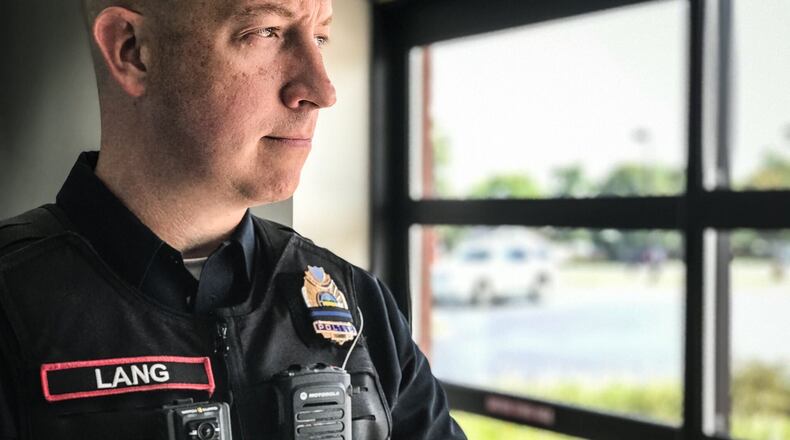“There are countless agencies that are being hit with lawsuits in the wake of officer involved shootings and/or the use of force,” he wrote. “Body worn camera technology has rapidly become one of the most critical pieces of duty gear for law enforcement by not only protecting the officers and agencies in legal matters, but also offering transparency and accountability to the community in unfortunate circumstances.”
The proposed Motorola-owned WatchGuard system comes in at $505,655 for 200 cameras, according to the sheriff’s office.
Montgomery County Sheriff Rob Streck said Wednesday the office is adding body-worn cameras after past command staff and former county administrators resisted the technology.
“The body cameras have been on our budget request for many years,” Streck said. “But for the past administration here at the sheriff’s office and some of the past administrations of the county it was kind of ‘wink, wink,’ ask for it, but don’t worry about it.”
Streck said he and the current command staff, deputies, county commissioners and administrators are all now supportive of body cameras.
“That’s why this kind of happened so quickly,” he said.
A recent Dayton Daily News survey of area law enforcement agencies showed about half use body cameras. Dayton is the largest city in Ohio whose police department does not widely use the camera systems. A local use-of-force committee recently recommended Dayton equip officers with body-worn cameras. The department is now testing a system.
Englewood was the first local department to use body cameras, receiving them in 2014 shortly after unrest in Ferguson, Mo. following the police shooting death there of Michael Brown, said Englewood Police Chief Mark Brownfield.
Body cameras are an indispensable tool for law enforcement and keeping the public’s trust, Brownfield said.
“We found that we needed the ability to accurately show how an event and an encounter with citizens and police officers are being handled,” Brownfield said. “More and more people were wanting that view of the encounter instead of just somebody’s word against somebody’s word. This is a way of accurately capturing what takes place.”
Derrick Foward, Dayton Unit NAACP president, applauded the sheriff’s office move Wednesday, saying the addition of body cameras is part of the civil rights group’s eight-point plan to reform the criminal justice system and improve relations with the Black community and police.
“This is a step to ensure the safety of officers and also the safety of the public,” he said.
Foward said body cameras don’t guarantee fewer fatal incidents with police, but the facts behind them should be clearer. He said the systems would have been beneficial for the investigation of the death of Dontae Martin, 34, who was shot 13 times by Montgomery County Sheriff’s deputies in 2016 after they responded to a vehicle crash.
A grand jury declined to indict the two deputies after considering testimony into Martin’s death, including that Martin pointed a handgun at deputies.
But complaints against police have become rarer as more people know they are being recorded adjust their behavior with officers — or don’t file complaints because of their behavior, Lang said.
Streck said the body camera purchase by sheriff’s office must still be approved by county commissioners, which could be as early as next week. The purchase was also fast tracked by a price break if the deal is made by Sept. 24, which will also allow the county to defer payments until 2022 and 2023, according to the county.
Every deputy sheriff will have a body camera and it will be rolling on every public contact, Streck said.
“All interactions will be recorded and every deputy will record,” he said.
Jail corrections officers will not wear body cameras, but sworn deputies with duties to transport inmates and those on court detail will wear the technology, though policies are still being drawn up, according to the sheriff’s office.
WatchGuard also has a continuous recording safety feature, which eliminates the potential of missing a critical incident if an officer fails to hit the record button. The system also has safeguards to track who views video and offers redaction software and makes it easier to fill public records requests, Kincaid said.
“The redaction software allows you to, for instance, take a person or an object that’s in a video and blur it out or remove it or remove audio from the video before it’s released to the public,” he said.
While the software capabilities of the new system help streamline the process, handling all the data and fulfilling public information requests will take more staff time and require some restructuring of the office, Streck said.
Brownfield and Streck said the drawback for most law enforcement agencies without cameras comes down to money.
“Body cameras are expensive. It’s going to be an ongoing expense for us now from here on out,” Streck said.
About the Author

